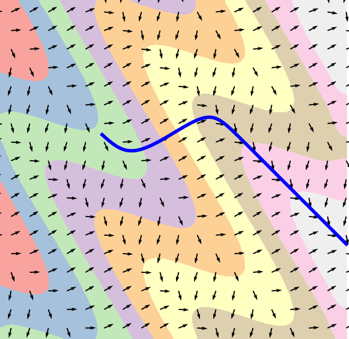Most moving objects don't move in a straight line. Most forces don't act precisely in the direction of motion. Gravity pulls. Water swirls.
Vector Calculus takes the ideas developed in one and two-variable calculus and applies them to the physics of two and three-dimensions. As we explore the development of these ideas, how you think about the world will change. From the complication of the formulas for gravitational attraction emerges the beauty of Kepler's laws. From electromagnetism emerges Maxwell's equations, Vector Calculus is the language of applied calculus.
The true beauty of Vector Calculus, however, lies in its ability to elucidate the connections between geometric objects and their analytic properties. The emphasis of our class will be on these links and the insights they give us into the mathematical and physical world.
- Cover Sheet for weekly assignments.
- Sample Cover Sheet.
- Calculation and Visualization using a computer
- Mathematica Intro notebook. Right-click or control-click the link to download. You can open this in Mathematica to see examples of different commands we'll use this semester.
- SageMath Intro Right-click or control click to download. You can either copy and paste individual cells into Sage server. Class specific notebooks can be found under the "Visualization'' page.
- Notes on the Cardiod
- Notes on the Constructing Potential Functions
- Notes on the Integral and Derivative forms of Scalar Curl
- Sketchy notes from day before break
- Summary of two tricks using Green's Theorem
- Divergence in Cylindrical Coordinates
- Study Guide for Exam 1
- Exam 1 Grade Boost Assignment
- Study Guide for Exam 2 The first study guide
- Study Guide Part 2 for Exam 2 The second study guide
- Final Project Instructions
- Old lecture notes
- A practice exam for second part of course.
